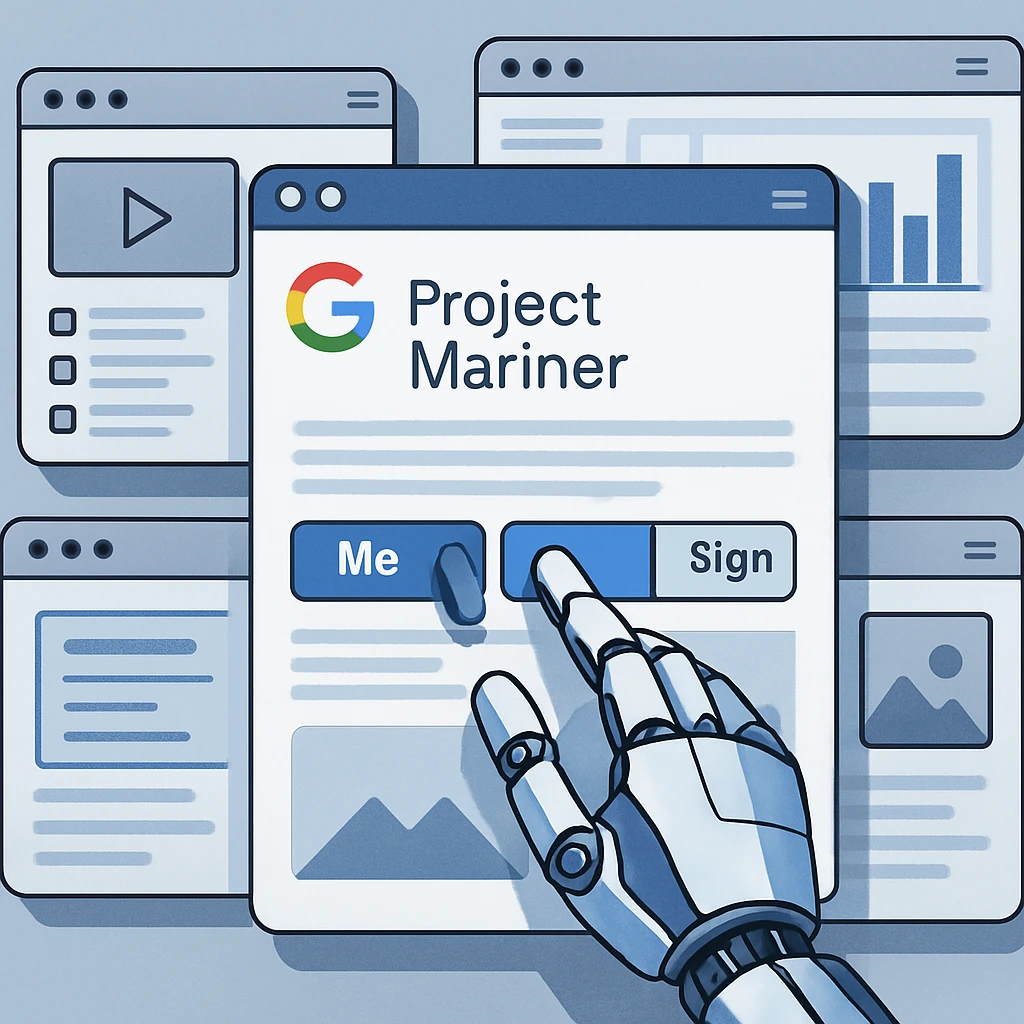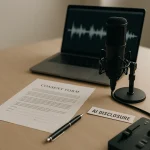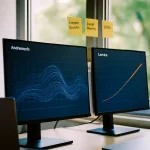Table of Contents
- The Dawn of Autonomous AI Agents: What Is Project Mariner?
- How Project Mariner Works: The Technical Foundation
- Real-World Applications: What Can Project Mariner Actually Do?
- Personal Task Automation
- Research and Information Gathering
- Data Management and Workflow
- The Competitive Landscape: Project Mariner vs. Other AI Agents
- OpenAI's Operator
- Anthropic's Computer Use
- Open-Source Alternatives: Browser Use
- The Evolution and Future of Project Mariner
- Limitations and Challenges
- Performance Constraints
- Safety and Privacy Considerations
- Technical Limitations
- Economic and Social Implications
- The Future of Digital Automation with AI Agents
- Increasing Autonomy and Capability
- Integration Across Digital Ecosystems
- Personalization and Adaptation
- Ethical and Regulatory Frameworks
- Democratization of Access
- The Transformative Impact of AI Agents
- FAQ (Frequently Asked Questions)
Margabagus.com – The digital landscape is witnessing a monumental shift in how we interact with technology. Imagine delegating your tedious online tasks—booking flights, researching products, filling forms—to an intelligent assistant that doesn’t just suggest what to do but actually does it for you. This vision has materialized through autonomous AI agents capable of navigating web interfaces just like humans do, with Google’s Project Mariner leading this revolutionary frontier. As these AI agents gain the ability to click, scroll, and work independently, we’re entering an era where the boundaries between human and AI digital interaction are becoming increasingly blurred, transforming our relationship with technology in profound ways.
The Dawn of Autonomous AI Agents: What Is Project Mariner?
Project Mariner represents Google DeepMind’s ambitious venture into the realm of autonomous AI agents. Officially unveiled in December 2024 and made more widely available in May 2025, Project Mariner is fundamentally reshaping how we think about AI assistants. Unlike traditional chatbots that merely respond to queries, Project Mariner can actively navigate web browsers, interact with various elements on a screen, and execute complex multi-step tasks without constant human supervision.
At its core, Project Mariner is an AI agent that can perceive what’s displayed on your browser screen, reason through complex goals, plan actionable steps, and navigate websites to carry out those plans. This web browsing AI can identify and understand web elements including text, code, images, and forms, building a comprehensive understanding of what’s displayed. By interpreting complex goals and reasoning to plan out actionable steps, it functions as a virtual assistant that can physically interact with digital interfaces.
What makes Project Mariner particularly groundbreaking is its ability to take autonomous actions on behalf of users. As Google describes it, the system “navigates and interacts with websites to carry out the plan, while keeping you informed.” This means users can delegate time-consuming tasks like research, planning, and data entry to an AI that can handle these responsibilities with minimal human intervention.
How Project Mariner Works: The Technical Foundation
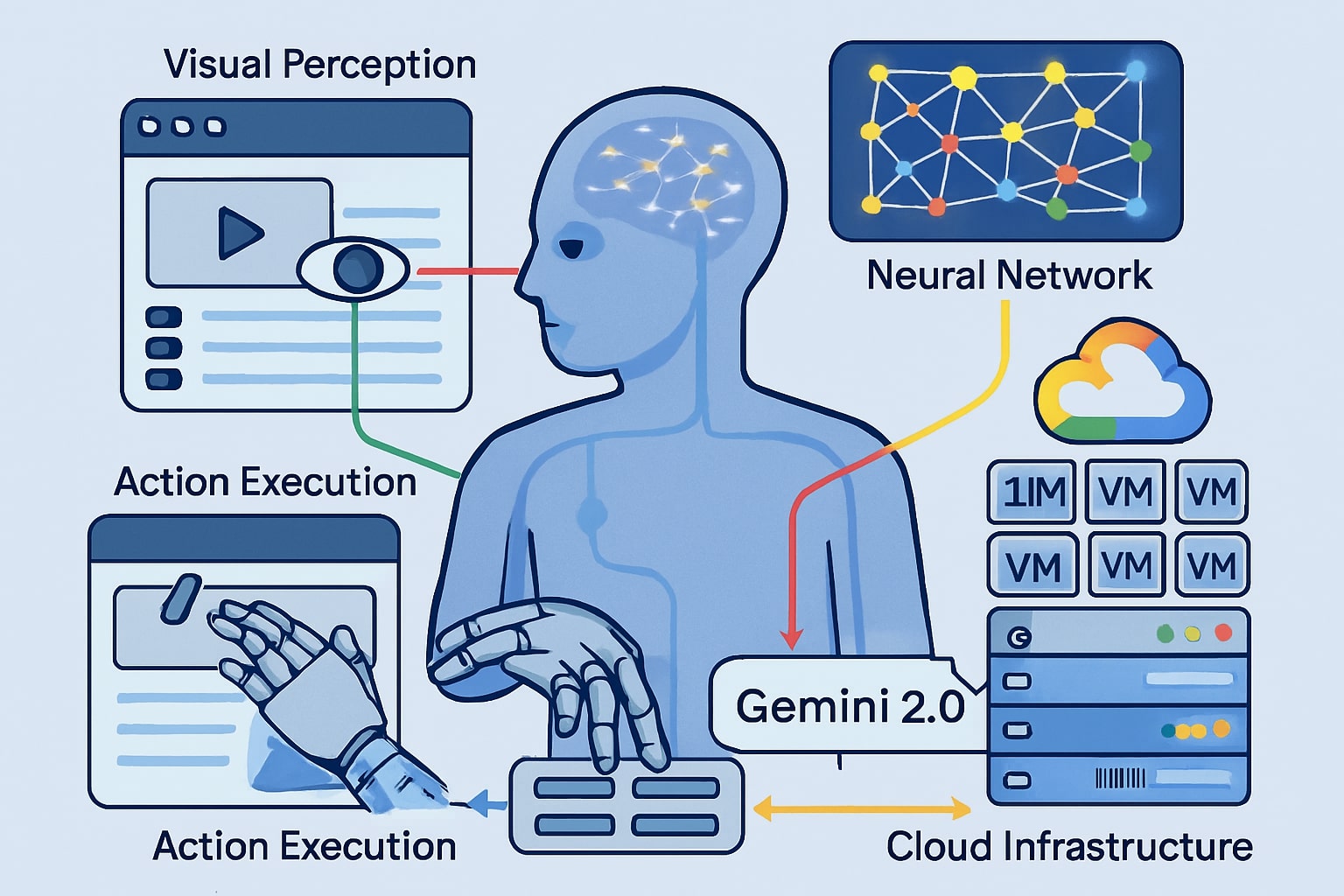
Images create with Microsoft Copilot.
The technological infrastructure behind Project Mariner is built upon Google’s powerful Gemini 2.0 foundation model. This sophisticated system combines several critical capabilities that enable it to function as an autonomous agent:
- Visual perception: Project Mariner can analyze screenshots of browser windows, understanding the layout, content, and interactive elements present on a webpage.
- Reasoning capabilities: Unlike simpler AI systems, Project Mariner employs complex reasoning to interpret user goals, plan appropriate actions, and adapt to changing circumstances during task execution.
- Action execution: The system can control browser actions like clicking buttons, filling forms, scrolling pages, and navigating between different websites—essentially mimicking human interaction with digital interfaces.
- Multi-tasking: One of the significant advancements announced in May 2025 was Project Mariner’s ability to handle up to 10 tasks simultaneously, running on virtual machines in the cloud rather than in a user’s browser.
These capabilities are delivered through a Chrome extension that integrates with the browser environment, allowing the AI to observe and interact with web content directly. The system operates through a chat-like interface where users can specify their goals in natural language, after which Project Mariner develops a plan and begins executing the necessary steps.
What distinguishes Project Mariner from earlier attempts at automation is its sophisticated combination of visual understanding, reasoning, and autonomous action. Unlike traditional Robotic Process Automation (RPA) tools that follow rigid, pre-programmed scripts, Project Mariner can adapt to changes in website layouts, unexpected prompts, and varied conditions—much like a human would.
Check out this fascinating article: How to Create High-Converting E-commerce Videos Using Google Veo 3: A Step-by-Step Guide
Real-World Applications: What Can Project Mariner Actually Do?
The practical applications of Project Mariner span across various domains, from everyday tasks to complex workflows. Here are some of the key use cases that Google has demonstrated:
Personal Task Automation
- Job hunting assistance: Project Mariner can search job listings based on a resume, identifying personalized opportunities on platforms like Climatebase.
- Email management: The system can navigate to an email inbox, find specific emails (such as a furniture order), and take follow-up actions based on the content.
- Shopping and logistics: Project Mariner can search for products, compare options, add items to carts, and even arrange for services like furniture assembly through platforms like TaskRabbit.
Research and Information Gathering
- Information synthesis: The agent can gather information from multiple sources, compile research findings, and present organized results.
- Content discovery: Users can ask Mariner to find specific types of content across various platforms, saving hours of manual searching.
Data Management and Workflow
- Recipe planning and grocery shopping: Project Mariner can find recipes, identify missing ingredients from your pantry, and add them to your online shopping cart.
- Travel planning: The system can research destinations, compare flight options, check hotel availability, and organize itineraries.
In a practical demonstration, Google showed how Project Mariner could assist with furniture assembly. The agent navigated to an email inbox, located a recent furniture order, and then proceeded to TaskRabbit.com to find someone who could help assemble the item. This multi-step process involved understanding the initial request, finding relevant information in emails, and then taking appropriate actions across different websites.
Another example involved Project Mariner searching through Google Drive to find a family recipe, noting which ingredients were missing, and then navigating to Instacart to add the missing items to a shopping cart. This showcases the system’s ability to work across different platforms and services, connecting various pieces of information to complete a cohesive task.
The Competitive Landscape: Project Mariner vs. Other AI Agents
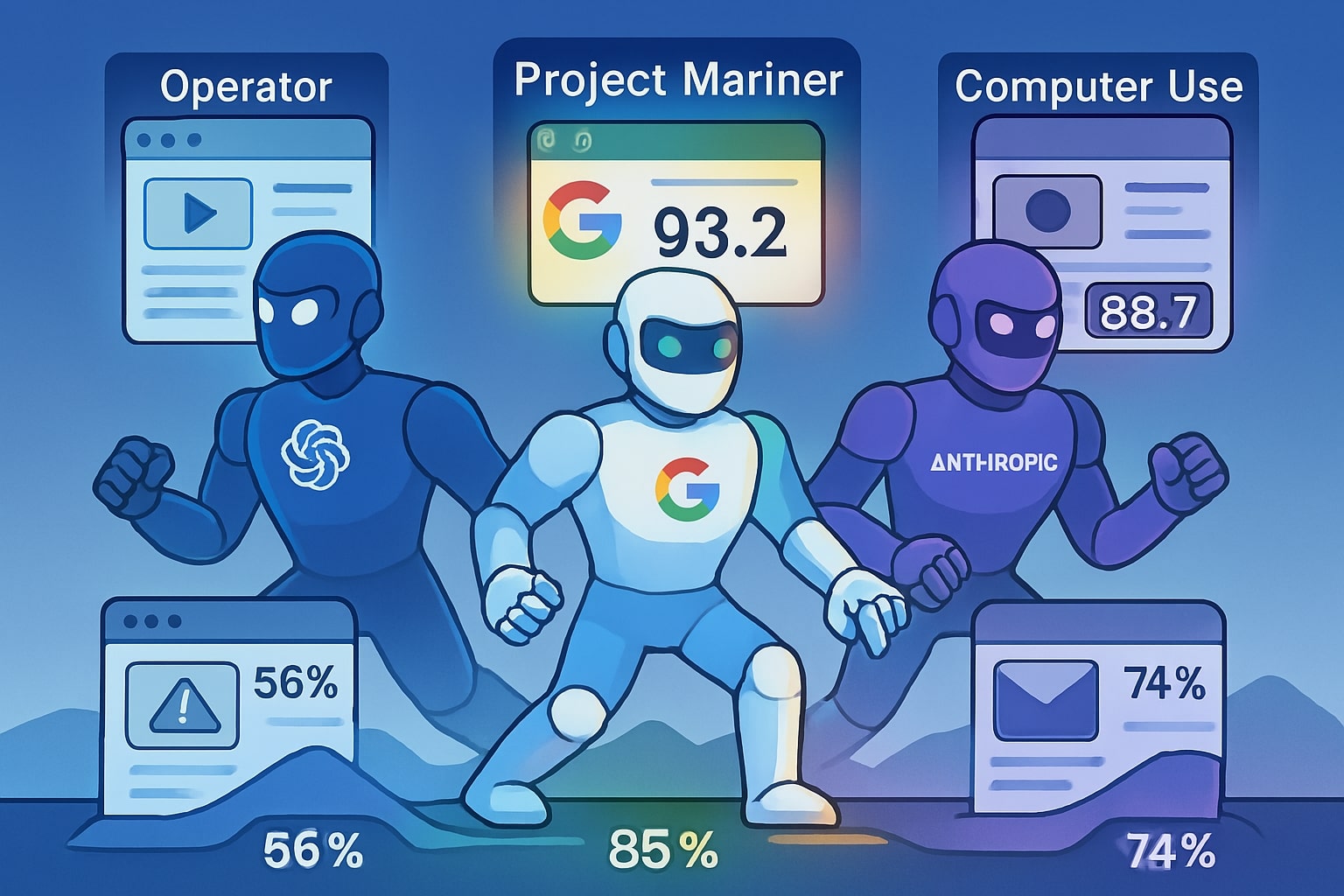
Images create with Microsoft Copilot.
Project Mariner isn’t alone in the AI agent technology arena. Several major tech companies have developed similar systems, each with their own approach to autonomous web interaction. Understanding this competitive landscape provides context for Project Mariner’s significance:
OpenAI’s Operator
Launched in January 2025, OpenAI’s Operator (powered by their Computer-Using Agent or CUA model) represents one of the most direct competitors to Project Mariner. Operator similarly allows users to delegate web browsing tasks to an AI assistant through natural language instructions. According to benchmark tests, Operator achieved an 87% success rate on the WebVoyager benchmark and 58.1% on WebArena.
Key differences include:
- Operator runs on OpenAI’s servers rather than as a browser extension
- It’s available to ChatGPT Pro subscribers at $200/month
- It focuses primarily on browser-based tasks rather than broader system interactions
Anthropic’s Computer Use
Released in late 2024, Anthropic’s Computer Use feature (available with Claude 3.5 Sonnet) takes a different approach by giving the AI the ability to control computers more broadly, not just web browsers. This system can:
- Interact with desktop applications
- Execute commands via a virtual keyboard and mouse
- Navigate complex interfaces beyond just websites
Performance benchmarks show that while Anthropic’s Computer Use scored lower on web navigation tasks (14.9% on OSWorld), it demonstrated superior performance in coding and software development tasks.
Check out this fascinating article: AI Agents 2.0: Building Autonomous Teams That Work While You Sleep
Open-Source Alternatives: Browser Use
The open-source community has also developed solutions like Browser Use, which creates a bridge between Large Language Models (LLMs) and browsers. This framework offers:
- Flexibility in model choice
- Customization options for developers
- Lower cost structure based on per-step pricing rather than token-based billing
When comparing these systems, Project Mariner stands out for its integration with Google’s ecosystem, allowing seamless interaction with services like Google Drive, Gmail, and Search. This integration provides a significant advantage for users already embedded in Google’s service environment.
According to the WebVoyager benchmark, Project Mariner achieved an 83.5% success rate, positioning it competitively against Operator (87%) and significantly outperforming older autonomous agent systems. However, each platform has distinct strengths: Operator offers the most polished user experience, Computer Use provides deeper visual understanding and reasoning, and Browser Use offers the greatest flexibility for developers.
The Evolution and Future of Project Mariner
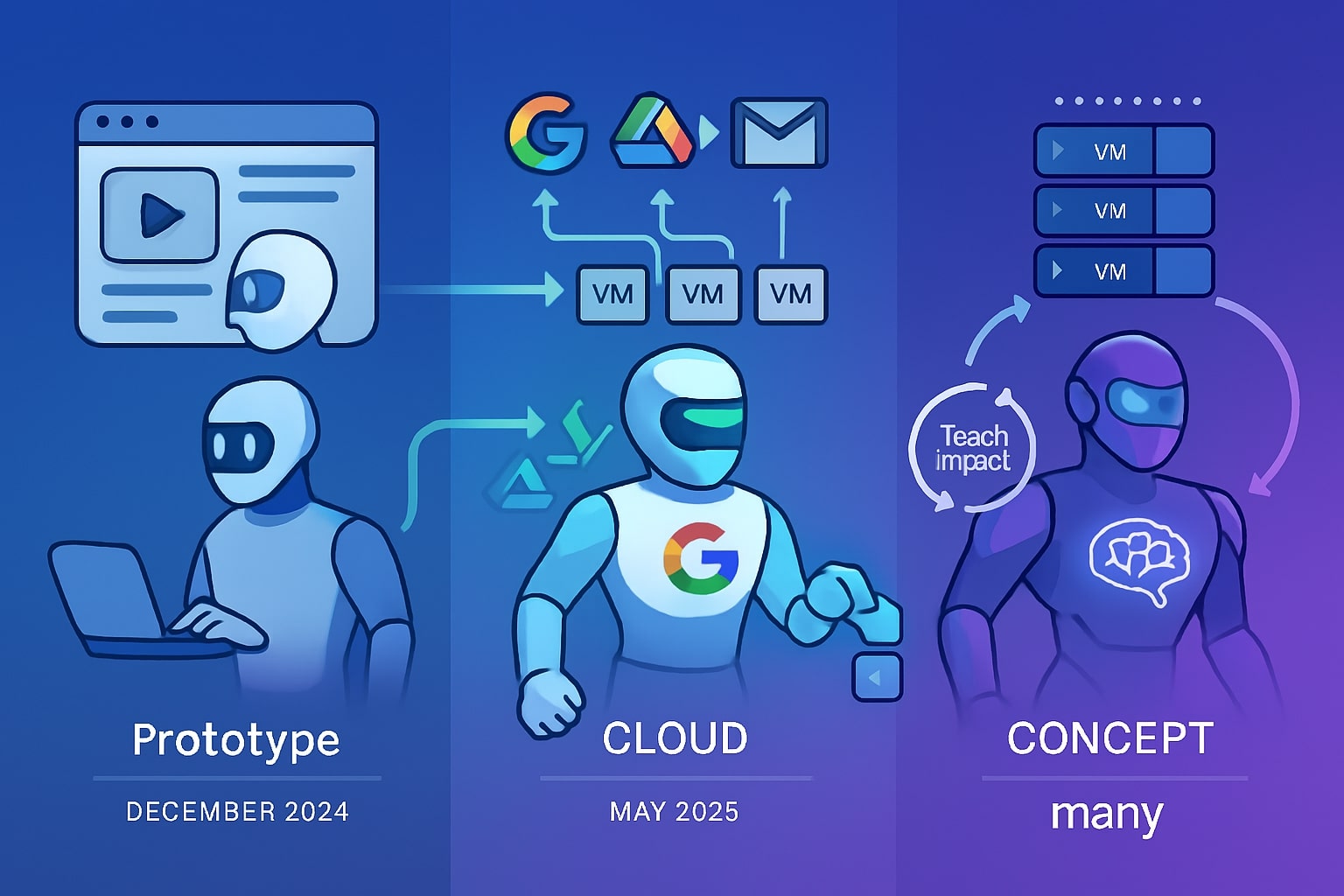
Images create with Microsoft Copilot
Since its initial introduction as a research prototype in December 2024, Project Mariner has undergone significant development. The May 2025 announcement at Google I/O marked a major milestone with several key improvements:
- Cloud-based virtual machines: Project Mariner now runs on virtual machines in the cloud, allowing users to work on other projects while the AI completes tasks in the background.
- Multitasking capabilities: The system can now handle up to 10 tasks simultaneously, greatly enhancing its utility compared to earlier versions.
- Wider availability: Initially limited to a small group of trusted testers, Project Mariner became available to U.S. subscribers of Google’s AI Ultra plan ($249.99 per month), with international expansion planned.
- Developer access: Google announced that Project Mariner’s capabilities would be brought to the Gemini API and Vertex AI, allowing developers to build applications powered by the agent.
- Integration with AI Mode: Google plans to integrate Project Mariner into AI Mode, the company’s AI-powered Google Search experience, though initially limited to Search Labs.
Looking ahead, Google has indicated several directions for Project Mariner’s continued evolution:
- “Teach and repeat” functionality: Enabling the agent to learn from being shown a task once and apply those insights to similar tasks in the future.
- Integration with Google’s “Agent Mode”: Combining web browsing with research features and integration with other Google apps.
- Partnerships with service providers: Google has mentioned working with companies like Ticketmaster, StubHub, Resy, and Vagaro to power agentic flows.
These developments suggest that Google sees Project Mariner as part of a broader shift in how users interact with the internet—moving from direct interaction with websites to delegating tasks to AI agents that can handle the details.
Limitations and Challenges
Despite its impressive capabilities, Project Mariner faces several significant limitations and challenges:
Performance Constraints
- Speed: Current iterations of Project Mariner are noticeably slower than human interaction, with reports indicating 5-second delays between cursor movements.
- Accuracy: While achieving an 83.5% success rate on benchmarks is impressive, it still means the system fails approximately one in six tasks.
- Complex task handling: The system can struggle with highly complex or ambiguous instructions that require nuanced understanding.
Safety and Privacy Considerations
Google has implemented several safety measures to address potential risks:
- Project Mariner cannot accept cookies or sign terms of service agreements on behalf of users.
- The system requires user consent before taking screenshots of browser windows for processing.
- It cannot perform checkout processes or enter payment information.
Despite these safeguards, privacy concerns remain regarding the transmission of screen content to cloud servers for processing, and the potential for sensitive information exposure.
Technical Limitations
- Browser dependency: Currently functions only within Chrome browsers.
- Foreground operation: Earlier versions required users to keep Project Mariner in the foreground, though this limitation has been partially addressed with cloud-based virtual machines.
- Internet dependency: Requires stable internet connection for cloud processing.
Economic and Social Implications
The broader adoption of autonomous AI agents raises important questions about:
- Website revenue models: If users interact less directly with websites, how will this affect advertising and engagement metrics?
- Digital divide: Access to these powerful tools is currently limited to those willing to pay premium subscription fees.
- Job displacement: As these agents become more capable, certain roles involving repetitive digital tasks may face automation pressure.
These challenges highlight that while Project Mariner represents a significant technological advancement, it remains an evolving technology with considerable room for improvement and careful consideration of its wider impacts.
Check out this fascinating article: The Ultimate AI Agent Tools and Frameworks Comparison Guide for 2025: Which Solution Is Right for You?
The Future of Digital Automation with AI Agents
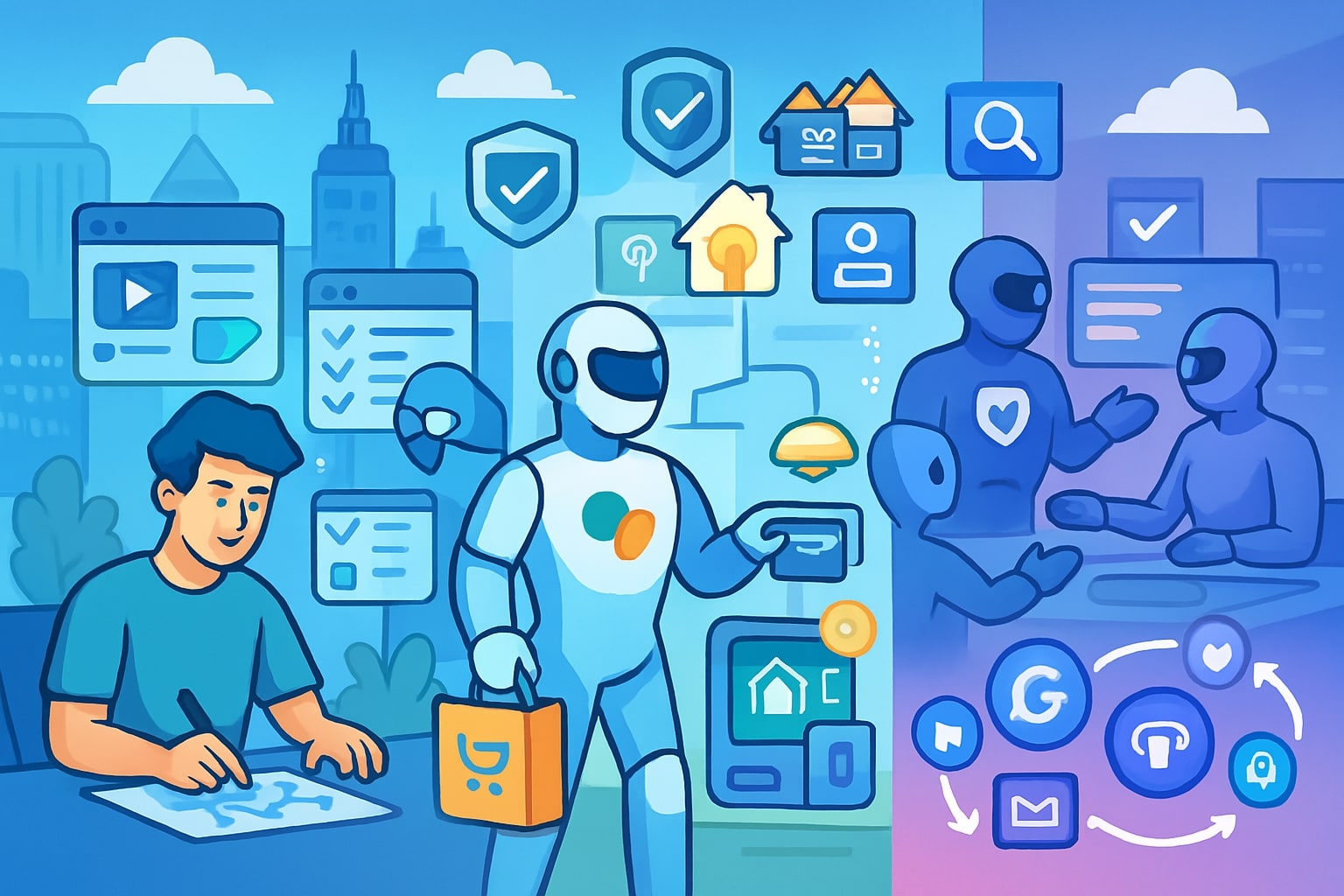
Images create with Microsoft Copilot
Project Mariner and similar technologies point toward a future where the boundary between human and AI digital interaction becomes increasingly fluid. As these systems continue to evolve, several trends are likely to shape their development:
Increasing Autonomy and Capability
Future iterations of AI agents will likely handle more complex tasks with less supervision. Developments in reinforcement learning and self-improvement mechanisms could allow these systems to learn from mistakes and adapt to new challenges without explicit programming.
Integration Across Digital Ecosystems
Rather than functioning as standalone tools, AI agents will likely become more deeply integrated into operating systems, applications, and digital services. This could lead to seamless handoffs between different agents specialized for particular tasks.
Personalization and Adaptation
As AI agents work more closely with individual users, they’ll develop personalized understanding of preferences, habits, and needs. This could enable them to anticipate requirements and proactively suggest or take actions.
Ethical and Regulatory Frameworks
The development of more capable autonomous agents will necessitate new ethical guidelines and possibly regulatory frameworks to ensure responsible deployment. Questions around consent, accountability, and appropriate boundaries will become increasingly important.
Democratization of Access
While currently limited to premium subscribers, the technology behind Project Mariner will likely become more accessible over time. This could lead to widespread adoption across different demographic groups and use cases.
Dr. Jakob Nielsen, a renowned user experience expert, suggests that the rise of autonomous AI agents could fundamentally transform web design priorities. In a February 2025 article, he proposed that traditional UI design might become less relevant as users increasingly interact with websites through AI intermediaries rather than directly. This could shift focus from human-centered design to creating interfaces that are easily navigable by AI agents.
The Transformative Impact of AI Agents
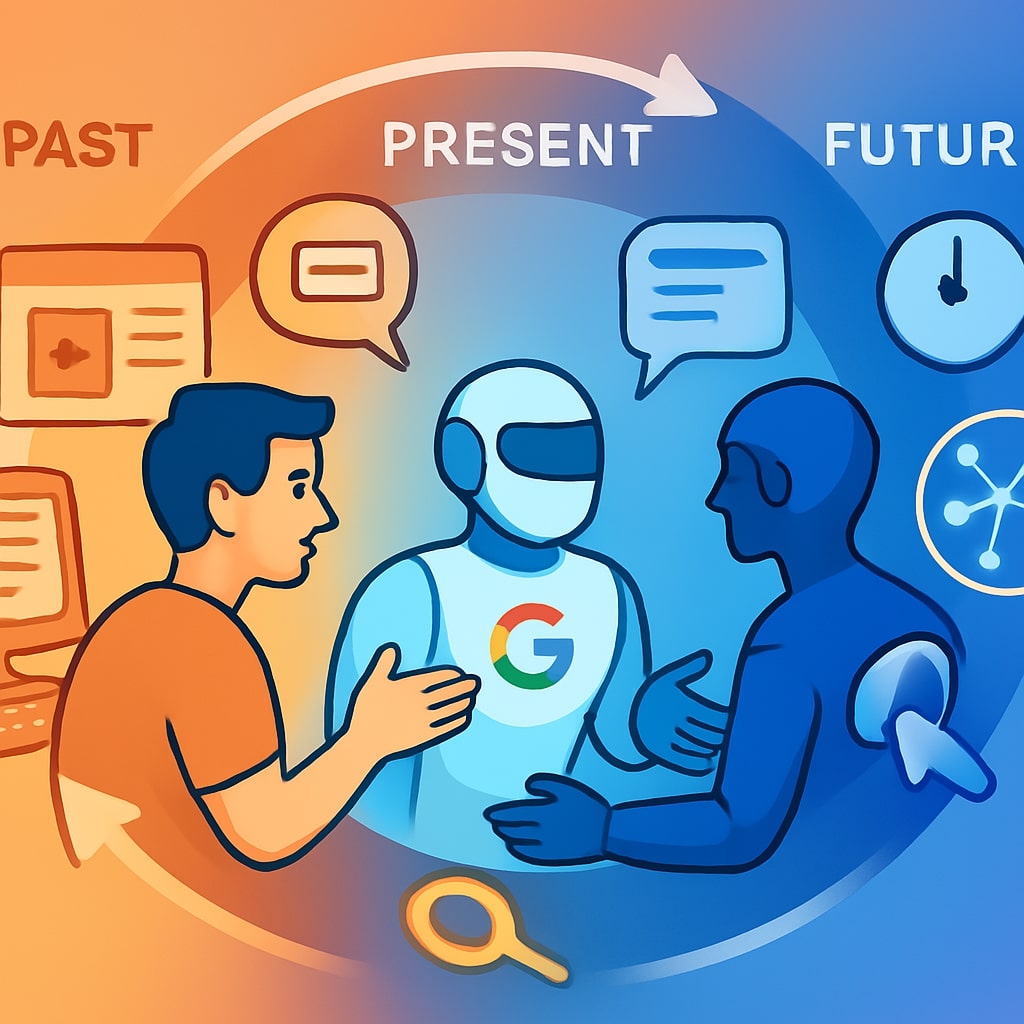
Images create with Microsoft Copilot
Project Mariner represents more than just another technological advancement—it signals a paradigm shift in how we interact with digital systems. By enabling AI to act as our digital proxy, Google has taken a significant step toward a future where the cognitive load of routine online tasks is dramatically reduced.
For businesses and developers, Project Mariner opens new possibilities for customer engagement, workflow optimization, and service delivery. For individual users, it promises to reclaim countless hours previously spent on mundane digital chores. And for the broader technological ecosystem, it establishes a new benchmark for what AI assistants can achieve.
As we navigate this transition, the key challenge will be balancing automation with appropriate human oversight and intervention. The most successful implementations will likely be those that enhance human capabilities rather than simply replacing them—creating a collaborative relationship between human intelligence and artificial agents.
Project Mariner and similar AI agents aren’t just changing how we use computers—they’re redefining our relationship with technology itself, marking the beginning of a new chapter in human-computer interaction where the line between user and tool becomes increasingly blurred.
